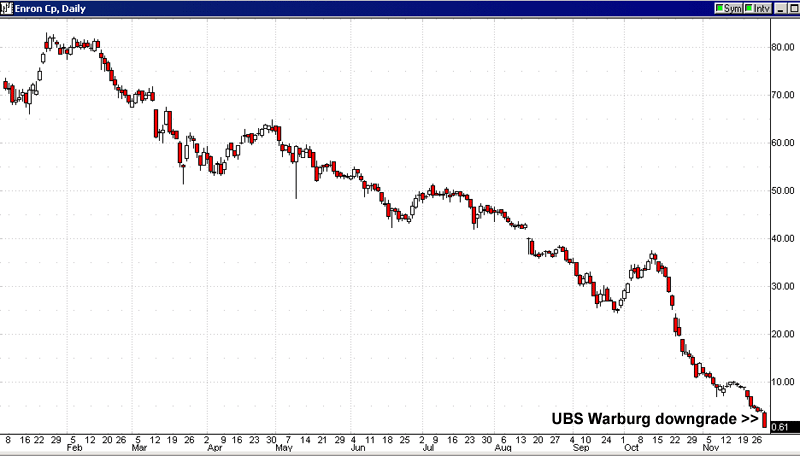During our recent trader survey, which looked at the habits of traders, a section offered the chance to ask either myself our Louise a question. In this article, I want to look at some of those questions posed by trader and offer a response to them.
How do you manage a loss if e.g. the share price drops a substantial price below your stop loss, e.g. on the back of bad news. Do you still get out despite the original margin loss being more than your limit tolerance or do you just hold on and turn the trade into a long term trade and wait for it climb back up?
Once upon a time, I had the misfortune to read the business rule of the ASX and within those rules there is very little that pertains to the average trader. There are rules about settlement and the like but these occupy precious little space within the actual rules. However, there is one unwritten rule that pertains to everyone and that is if you have no money you cannot play. If all your money is gone then it is impossible for you to play – it is as simple as that.
This raises the question of how does one lose all their money and there are several reasons but they all have a single theme. They allowed their losses to run out of control.
Consider the chart below of the long defunct Enron and ask yourself the question at which point will I admit that I am wrong. I have chosen Enron as an example because it illustrates the extraordinary amount of time that participants in the stock had to admit that they were wrong and salvage something from the disaster. On the chart, I have marked the point at which investment bank UBS Warburg admitted that they were wrong. However, note this is a qualified we were wrong because they only ever issued a downgrade on the stock like the majority of brokers they never actually issued a sell recommendation.
The interesting thing about this is that the only time the majority of the trading community admitted they were wrong about this situation was when the stock disappeared. Even then, they consoled themselves with the fact that Enron had been one giant con and they had simply been caught up like tens of thousands of others. They took solace in the fact that they were as stupid as everyone else. As if being a moron in a group of morons was something to aspire to.
This is a simple issue – at what point do you have the courage to admit that you were wrong.
A stop loss does not become invalid simply because price has moved though it by more than you think it ought to have. Stops are not conditional, your order to your broker is not sell it if it goes down a little but keep it if it goes down by a lot.
To use an example let us assume that you are trading XYZ, which is currently trading at $10.00, and you have a stop loss at $9.00. In the session the stock drops to $8.99, this point is below your stop do you –
1. Obey your trading plan and exit the share because it has closed below your stop.
2. Hang on because it did not trade exactly at $9.00, which was where you had placed your stop.
A sensible trader would opt for the first course of action. The position would be liquidated at $8.99.
However, this is a reasonably easy test. Suppose instead that price was not trading at $8.99 but rather at $7.99. Such an event raises a large number of emotional impediments to taking the action that is required. We have now entered hope and pray land – the land where all rational thought wanders out the window.
Interestingly if we remove the emotion from the situation, the problem is still the same. You had a stop at a given point and price is now below that point. The only logical action you can take is to exit the position but here is the flaw in my statement. I used the word logical and most people are not logical, in fact, we are far from logical and have in my opinion an unbounded capacity for irrationality.
Unfortunately, this question is an example of our unbounded irrationality. When you have gotten it wrong harden up and admit it.
How to spot price manipulations by other traders?
Who cares?
Whilst this might seem to be a flippant response, the job of monitoring market manipulation is the responsibility of regulators. Unfortunately, traders are often preoccupied with side issues such as this when they are not relevant to the daily life of a trader. However, such things do have an interest for traders because they add to the mystique, romance or whatever of the market. It is also much easier to use this as an excuse, as to why you cannot trade than to simply admit that you have neither the self- control, nor the discipline to trade effectively. It is so much simpler to state that the market is rigged than to spend time thinking about what your role is within the market.
Worry about things you can control not things you cannot and in trading the only thing you can control is yourself.






I follow my trading plan no matter what. If the price hits my stop or more than calculated, I have given my broker a set of rules and he/she knows to get me out. This is one reason I moved away from trading stocks & CFDs as a gap in the market due to overnight events can totally wipe out your trading account. There are instruments that trade nearly 24hrs per day, less chance of gaps on these and highly liquid, nearly guaranteeing you your stop loss price give or take a few points.